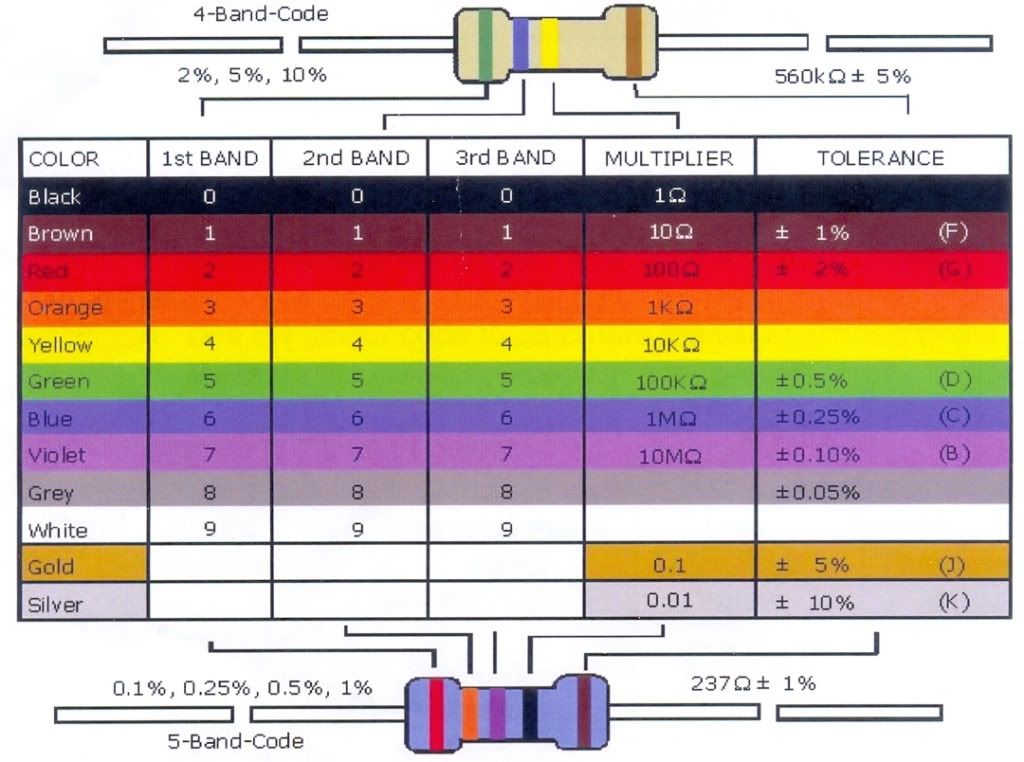Our next lesson was on resistors, which dampen the flow of electricity through the circuit. We learnt how to indentify what the resistors values are, based on their colours and how to calculate that. We also conducted some tests on the resistors.
Colour Identification
Resistors can be indentified with a code, made up of different colours and positions of the bands of colour. The most common types of resistors have only four bands, the first two bands are numbers to write down, the third band colour equals the multiplier and the colour of the last band determines the decimal
Below is the chart we were given to use to work out what each resistors value is.
Identification and combining practice
For this exercise we had to grab six different types of resistors and figure out their value in two ways. First we had to use the colour code to calculate the value and then we had to use the multimeter to measure the resistance value.
Band Colours & No's. Measured Val. Low Tol. Val. High Tol. Val.
Green, Blue, Brown, Gold 554Ω 532Ω 588Ω
5, 6, 0 ± 5%
Red, Red, Red, Gold 2170Ω 2090Ω 2310Ω
2, 2, 00 ± 5%
Yellow, Violet, Black, Gold 47Ω 44.65Ω 49.35Ω
4, 7 ± 5%
Grey, Red, Yellow, Gold 841000Ω 779000Ω 861000Ω
8, 2, 0000 ± 5%
Brown, Black, Red, Gold 984Ω 950Ω 1050Ω
1, 00 ± 5%
Brown, Black, Yellow, Gold 98200Ω 95000Ω 105000Ω
1, 0000 ± 5%
All of our resistors passed the test, meaning that they were all in good working order.
Pick two resistors and record their individual ohm resistance value measured with a multimeter:
Resistor 1: 2170Ω Resistor 2: 984Ω
Put these two resistors together in series and measure their combined value:
1 & 2 in series: 3150Ω
Put the two resistors together in parallel. Measure their combined value:
1 & 2 in parallel: 677Ω
What principles of electricity have we demonstrated with this?
The total resistance will always be less than the lowest resistance in the resistors. It was designed so that the high resistance could go through the parallel circuits and for scientists to calculate Ohms.

No comments:
Post a Comment